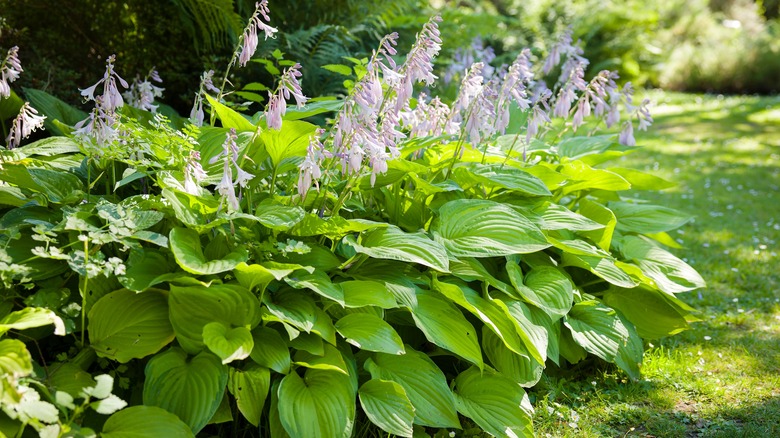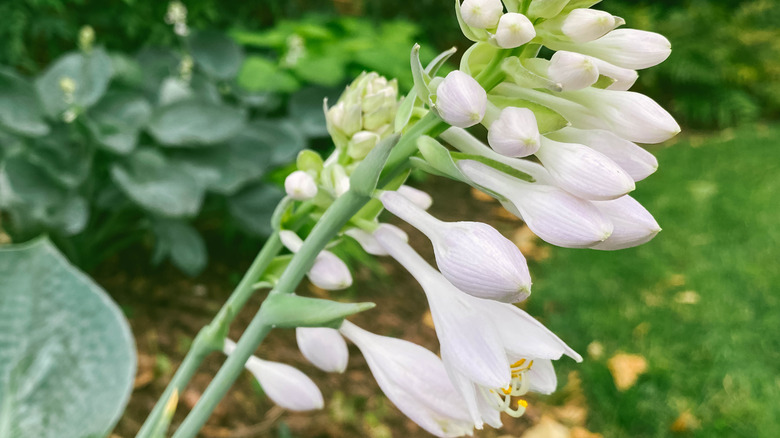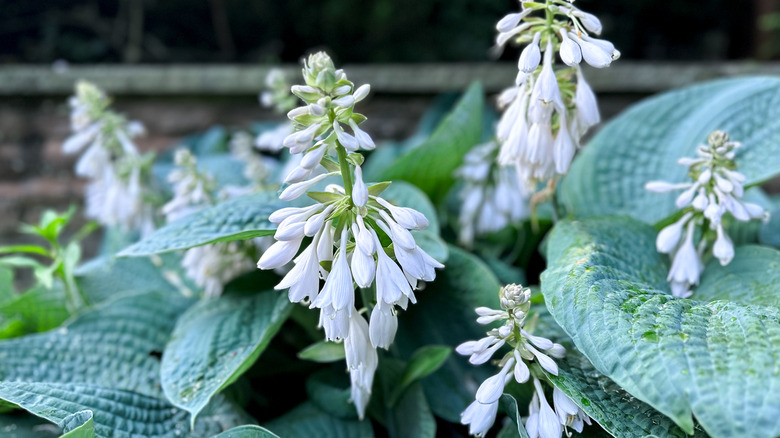When You Should & Shouldn't Deadhead Hosta Flowers
Hostas are a tried and true garden perennial. With thousands of varieties in all sizes, shapes, and shades of green, hostas provide low maintenance perennial beauty all season long, and thrive in shady locations. Though mostly valued for their sumptuous foliage, hostas also produce flowers, most of them a pale lavender color. Some hostas have more attractive flowers than others, and might be best left to bloom; while others are not so showy and can be deadheaded in summer. Deadheading can be done as soon as hosta flowers form or after they're done, depending on your preference.
Showy flowers on hostas usually mean flowers that are well-shaped, abundant, colorful, or unusual. 'Flower Show' is a handsome variegated hosta that produces white and purple striped flowers. Varieties with attractive dark purple flowers (which are sought after among many hosta enthusiasts) include 'Violetta', 'Purple Passion', 'Purple Heart' (which also has dark purple leaf stems) and 'Time in a Bottle' (whose dark purple flowers stay in slender bud form). Some gardeners love white-flowered hostas such as 'Cathedral Windows', 'Honeybells', or 'Guacamole'. Personally I like 'Royal Standard' with majestic white flowers that are also fragrant.
Fragrant hosta flowers are a somewhat uncommon delight in the garden. The fragrant ones are believed to descend from one variety, the 'Plantaginea' hosta, and all have white flowers. 'Aphrodite' hosta has large double white flowers with a sweet, honey-like fragrance. Other fragrant white-flowered hostas include 'Etched Glass', 'Royal Wedding', and 'Irish Luck'.
Benefits to deadheading or keeping hosta flowers
Usually the decision to deadhead hosta flowers is a purely aesthetic one. Some gardeners prefer to grow hostas for their leaves, not their flowers. Certain hostas produce small leaves on the stems of the flowers, and some may not like this look. I find the otherwise-attractive variegated hostas, 'Albo Marginata' and 'Francee', do this, so I tend to trim the flowering stem off when it appears, as the flowers on both are a fairly nondescript pale purple.
Trimming the flowering stems also allows more energy to be directed toward nourishing the foliage. But the flowers need not be immediately discarded. You can also use these trimmed stems for fresh-cut flower arrangements. They can add delicately-colored bell-shaped flowers to a simple summer bouquet. If you add scapes that have both buds and flowers, they will last longer in the vase.
If you like the look of your hostas' flowers, hooray! Let them flower. The flowers usually bloom one day, but multiple buds on the multiple scapes means the overall display may last between three to four weeks, depending on the variety and the weather. Keep your hostas well-watered during the summer flowering period so the blooms don't get droopy or scorched from heat. Some hosta flower petals may drop off on their own. When this starts happening, it will soon be time to deadhead the stems, which is an easy task.
Deadheading hosta flower stems
Once your hosta flowers have gone through their flowering period, you should deadhead them to keep them looking neat for the remainder of the season. Most hostas remain fairly sturdy through autumn, although you can trim and remove any scorched or damaged leaves as needed. Removing the flowering stems of your hostas is a staple of hosta care and should be on your list of late summer garden tasks.
Use a pair of bypass pruners or garden snips to trim the stems. For a nice neat look, reach down and cut the stems just below the top layer of leaves, so they don't stick out. You should also lightly water your hostas after trimming off the flowering stems, as a large amount of pruning activity can sometimes cause a bit of stress to plants, especially in the middle of the growing season.
Some gardeners opt to let their hostas flower, and then allow the stems to die back naturally. This is certainly an option. However, sometimes the stems of your hostas will dry out and turn brown before the leaves start to fade, which may look somewhat unsightly. Once the stems dry out thoroughly, they can sometimes be easily pulled from the plant, but you may still need snips or pruners to remove them. Pruning the green stems is easier than pruning the dried stems, as I have found the dry stems can sometimes get a bit tough and fibrous.


